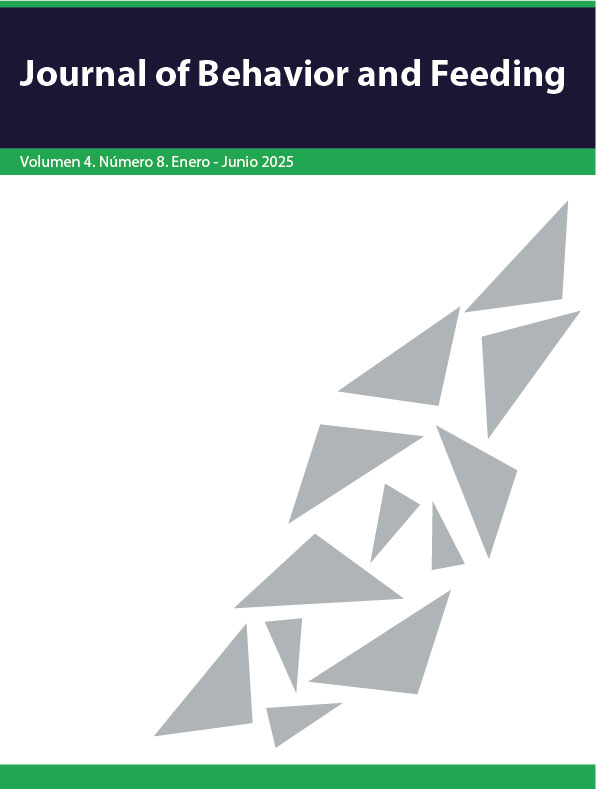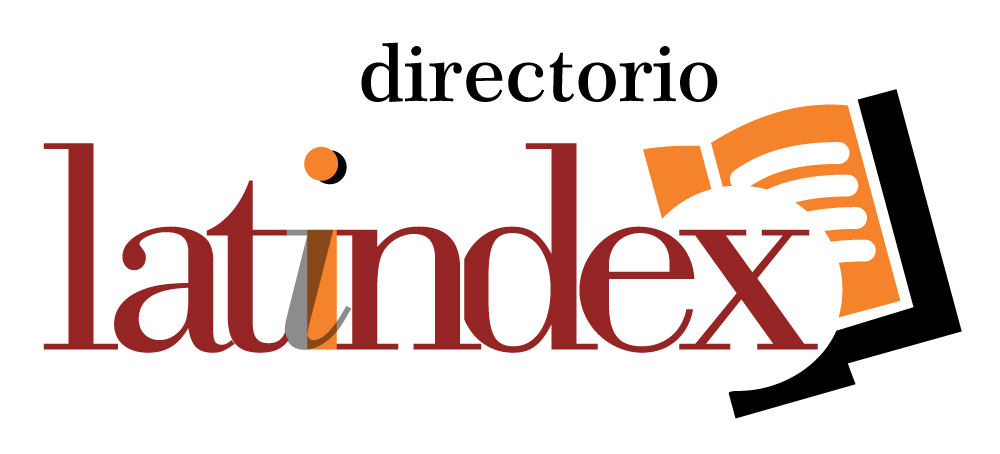Beyond the scale: Rethinking health in a weight-centered context
DOI:
https://doi.org/10.32870/jbf.v4i8.62Keywords:
weight-centered approach, fatphobia, hunger, satietyAbstract
A weight-centered approach refers to the excessive focus on body weight as the primary indicator of health and well-being. This perspective often leads to the stigmatization of individuals with overweight or obesity and to reductive health approaches that neglect other critical factors such as balanced nutrition, physical activity, and emotional well-being. Healthcare professionals play a pivotal role in this dynamic. Studies have shown that some may harbor biases against patients with higher body weights, leading to incomplete diagnoses, reduced consultation time, or recommendations solely focused on weight loss, overlooking other health determinants. Such attitudes can diminish the quality of care and discourage patients from seeking medical help, exacerbating physical and mental health issues. Hunger and satiety are biological mechanisms that regulate food intake. These processes are influenced by factors such as hormones (ghrelin and leptin), environment, emotional state, and dietary habits. However, a weight-centered approach can undermine these natural cues, promoting restrictive diets that contribute to eating disorders and dysfunctional relationships with food. Consequently, weight management strategies should prioritize sustainable and holistic approaches encompassing nutrition, physical activity, and mental well-being, rather than fixating on achieving a specific number on the scale. Promoting healthy habits and embracing body diversity are more effective and ethical ways to enhance overall health and quality of life. This perspective aims to reflect on these issues, highlighting the integral role of nutrition and advocating for respectful and equitable healthcare practices.
Downloads
References
Abrams, Z. (2022). The burden of weight stigma. Monitor on Psychology, 53(2). https://www.apa.org/monitor/2022/03/news-weight-stigma
Adam, T. C., y Epel, E. S. (2007). Stress, eating and the reward system. Physiology & Behavior, 91(4), 449-458. https://doi.org/10.1016/j.physbeh.2007.04.011
Allende, I. A. (2020). Gordofobia, una lectura desde (y para) el trabajo social. Perspectivas: Revista de Trabajo Social, (35), 109-133. https://doi.org/10.29344/07171714.35.2393
Alleva, J. M., Karos, K., Meadows, A., Walden, M. I., Stutterheim, S. E., Lissandrello, F., y Atkinson, M. J. (2021). “What can her body do?” Reducing weight stigma by appreciating another person’s body functionality. PLOS ONE, 16, 1–15. https://doi.org/10.1371/journal.pone.0251507
Blundell, J. E., Rogers, P. J., y Hill, A. J. (2010). Determinantes conductuales y fisiológicos del tamaño de las comidas en humanos: evidencia de estudios de precarga. Nutrition Research Reviews, 3(1), 133-153. https://doi.org/10.1079/NRR19900010
Champe, P. C., Harvey, R. A., y Ferrier, D. R. (2006). Bioquímica ilustrada. Artmed.
Chavarriaga, V., Uribe, M., y Gañan, A. (2024). Exploración de las experiencias y relaciones entre el trastorno de conducta alimenticia y la gordofobia desde la perspectiva de un grupo de adultos-jóvenes en Medellín (Colombia). Psicoespacios, 18(32). https://doi.org/10.25057/21452776.1546
Clark, O., Lee, M. M., Jingree, M. L., O’Dwyer, E., Yue, Y., Marrero, A., Tamez, M., Bhupathiraju, S. N., y Mattei, J. (2021). Weight stigma and social media: Evidence and public health solutions. Frontiers in Nutrition, 8, 739056. https://doi.org/10.3389/fnut.2021.739056
Cooper Stoll, L., y Egner, J. (2021). We must do better: Ableism and fatphobia in sociology. Sociology Compass, 15(4), e12869. https://doi.org/10.1111/soc4.12869
Cooper Stoll, L., Meadows, A., von Liebenstein, S., y Carlsen, C. E. (2022). Fatphobia. En G. W. Muschert, K. M. Budd, H. Dillaway, D. C., Lane, M. Nair y J. A. Smith (Eds.), Global Agenda for Social Justice 2 (pp. 37-44). Policy Press. https://doi.org/10.51952/9781447367420.ch004
Crimer, N., Camoirano, J., y Lo Sasso, A. (2023). Obesidad: alternativas al paradigma pesocéntrico y patologizante. Primera entrega. Evidencia, 26(3), e007088. https://doi.org/10.51987/evidencia.v26i4.7088
Cummings, D. E., y Overduin, J. (2007). Gastrointestinal regulation of food intake. The Journal of Clinical Investigation, 117(1), 13-23. https://doi.org/10.1172/JCI30227
De Lorenzo, A., Bianchi, A., Maroni, P., Iannarelli, A., Di Daniele, N., Lorenzo, N. y Di Renzo, L. (2016). La adiposidad más que el IMC determina el riesgo metabólico. Revista Internacional de Cardiología, 219, 388-393. https://doi.org/10.1016/j.ijcard.2016.06.012
Díaz, F. J., Hernández, A. V., y Franco, K. (2011). El concepto de la saciedad en el análisis de la conducta alimentaria. En A. López-Espinoza y A. G. Martínez (Eds.), Del Hambre a la Saciedad: Contribuciones Filosóficas, Psicológicas, Socioantropológicas y Biológicas (pp. 116-129). Editorial Universitaria.
Eraso-Checa, F., Rosero, R., González, C., Cortés, D., Hernández, E., y Polanco, J. (2023). Modelos de composición corporal basados en antropometría: Revisión sistemática de literatura. Nutrición Hospitalaria, 40(6), 1245-1255. https://doi.org/10.20960/nh.04567
Fardouly, J., y Vartanian, L. R. (2016). Las redes sociales y la imagen corporal: investigación actual y direcciones futuras. Current Opinion in Psychology, 9, 1-5 . https://doi.org/10.1016/j.copsyc.201
Forbes, Y., y Donovan, C. (2019). The role of internalised weight stigma and self?compassion in the psychological well?being of overweight and obese women. Australian Psychologist, 54(6), 471-482. https://doi.org/10.1111/ap.12407
Friedman, J. M. (2019). Leptin and the endocrine control of energy balance. Nature Metabolism, 1(8), 754-764. https://doi.org/10.1038/s42255-019-0095-y
Gonzalez, M. C., y Heymsfield, S. B. (2017). Bioelectrical impedance analysis for diagnosing sarcopenia and cachexia: what are we really estimating? Journal of Cachexia, Sarcopenia and Muscle, 8(2), 187-189. https://doi.org/10.1002/jcsm.12159
González Jiménez, E. (2013). Composición corporal: Estudio y utilidad clínica. Endocrinología y Nutrición, 60(2), 69-75. https://doi.org/10.1016/j.endonu.2012.04.003
Hall, K. D., Ayuketah, A., Brychta, R., Cai, H., Cassimatis, T., Chen, K. Y., ... y Zhou, M. (2019). Ultra-processed diets cause excess calorie intake and weight gain: an inpatient randomized controlled trial of ad libitum food intake. Cell Metabolism, 30(1), 67-77. https://doi.org/10.1016/j.cmet.2019.05.008
Hernández, A. G. D. (2010). Tratado de Nutrición: Composición y Calidad Nutritiva de los Alimentos (Vol. 2). Ed. Médica Panamericana.
Lema, R. (2022). Intervenciones no pesocentristas y principios de salud en todas las tallas en el abordaje del sobrepeso y la obesidad. Revisión narrativa de la literatura. Revista de Nutrición Clínica y Metabolismo, 5(3), 47-57. https://doi.org/10.35454/rncm.v5n3.384
Lucibello, K. (2022). Bearing the weight (of stigma): Examining weight stigma, body image, and physical activity in adolescents. [Tesis doctoral, Department of Kinesiology, University of Toronto]. TSpace Repository.
Mancuso, L., Longhi, B., Perez, M., Majul, A., Almeida, E., y Carignani, L. (2021). Diversidad corporal, pesocentrismo y discriminación: la gordofobia como fenómeno discriminatorio. Inclusive, 4(2), 12-16. https://es.scribd.com/document/579493588/inadi-revista-inclusive-n4
Mensinger, J. L. (2022). Traumatic stress, body shame, and internalized weight stigma as mediators of change in disordered eating: A single-arm pilot study of the Body Trust® framework. Eating Disorders, 30(6), 618–646. https://doi.org/10.1080/10640266.2021.1985807
Nutter, S., Saunders, J. F., y Waugh, R. (2024). Current trends and future directions in internalized weight stigma research: a scoping review and synthesis of the literature. Journal of Eating Disorders, 12, 98. https://doi.org/10.1186/s40337-024-01058-0
Ochoa, C., y Muñoz, G. M. (2014). Hambre, apetito y saciedad. Revista Cubana de Alimentación y Nutrición, 24(2), 268-279. https://revalnutricion.sld.cu/index.php/rcan/article/view/193
Organización Mundial de la Salud. (2024). Obesidad y sobrepeso. https://www.who.int/es/news-room/fact-sheets/detail/obesity-and-overweight
Peralta, C. A. (2017). Fisiología de la Nutrición. Editorial El Manual Moderno.
Puhl, R. M., Lessard, L. M., Himmelstein, M. S., y Foster, G. D. (2021). The roles of experienced and internalized weight stigma in healthcare experiences: Perspectives of adults engaged in weight management across six countries. PLOS ONE, 16(6), e0251566. https://doi.org/10.1371/journal.pone.0251566
Raymond, J. L. y Morrow, K. (2021). Krause. Mahan. Dietoterapia (15a ed.). Elsevier.
Schvartzman, I. (2022). Salud en Todas las Tallas: un nuevo, y necesario, enfoque de trabajo en salud. Revista Límbica, 3(4), 32-40. https://revistalimbica.com/wp-content/uploads/2022/12/Salud-en-todas-las-tallas_Irene-Schvartzman.pdf
Star, A., Hay, P., Quirk, F., y Mond, J. (2015). Perceived discrimination and favourable regard toward underweight, normal weight and obese eating disorder sufferers: implications for obesity and eating disorder population health campaigns. BMC Obesity, 2, 4. https://doi.org/10.1186/s40608-014-0032-2
Strings, S. (2023). How the use of BMI fetishizes white embodiment and racializes fatphobia. AMA Journal of Ethics, 25(7), 535-539. https://doi.org/10.1001/amajethics.2023.535
Thille, P., Friedman, M., y Setchell, J. (2017). Weight-related stigma and health policy. Canadian Medical Association Journal, 189(6), E223-E224. https://doi.org/10.1503/cmaj.160975
Tomiyama, A. J., Carr, D. C., Granberg, E. M., Major, B., Robinson, E., Sutin, A. R., y Brewis, A. (2018). Weight and obesity are complex issues and weight-stigma harms, not helps. BMC Medicine, 16, 1-6. https://doi.org/10.1186/s12916-018-1116-5
Published
How to Cite
Issue
Section
License
Copyright (c) 2025 Authors

This work is licensed under a Creative Commons Attribution 4.0 International License.
This is an open-access article distributed under the terms of the Creative Commons Attribution License (CC BY). The use, distribution or reproduction is permitted, provided the original author(s) and the copyright owner(s) are credited and that the original publication in this journal is cited, in accordance with accepted academic practice. No use, distribution or reproduction is permitted which does not comply with these terms.






